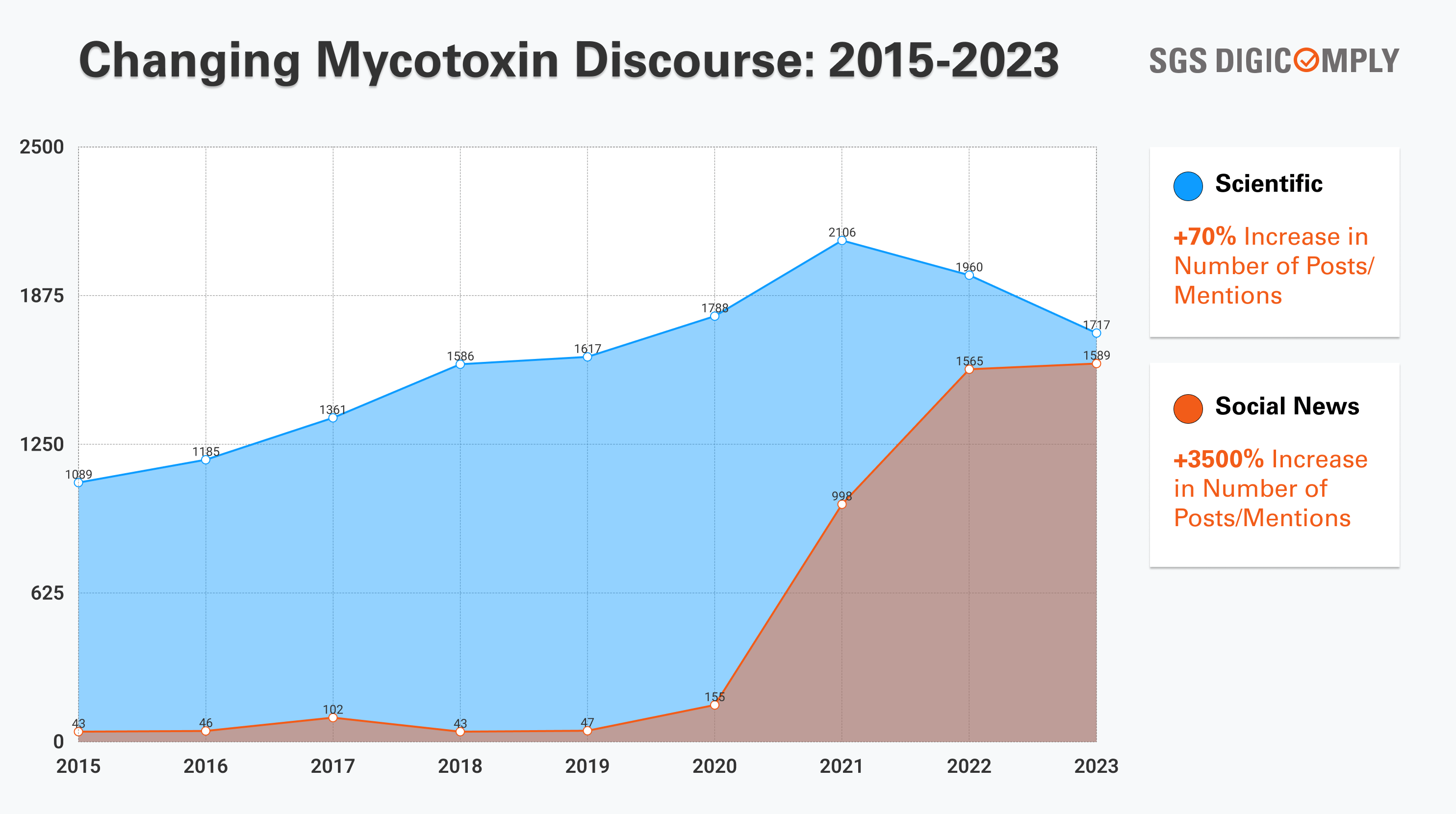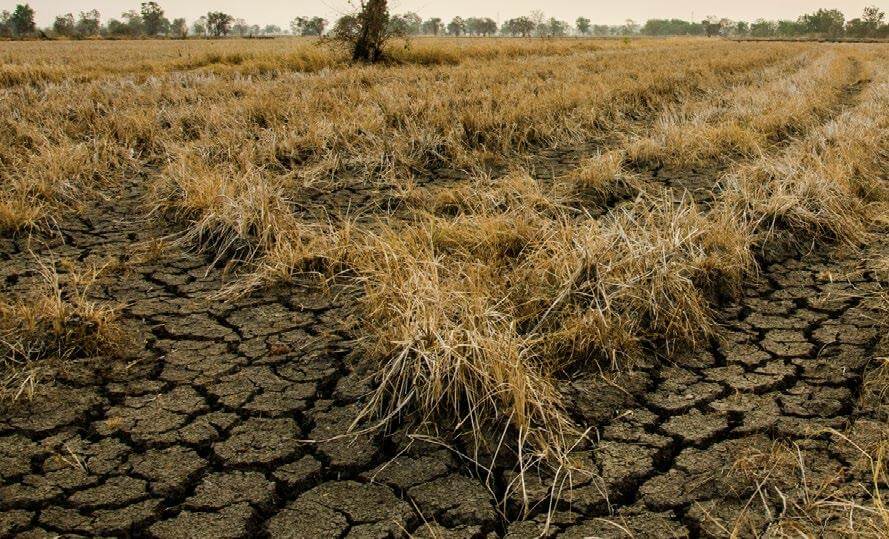Mycotoxins, toxic secondary metabolites produced by certain fungi, pose significant threats to human and animal health, as well as agricultural productivity. The nexus between climate change and mycotoxin presence has emerged as a critical area of concern. Climate change, characterized by alterations in temperature, precipitation patterns, and extreme weather events, exerts substantial influence on the synthesis, distribution, and proliferation of mycotoxins. Understanding these dynamics is pivotal in devising effective strategies to mitigate mycotoxin-associated risks in regions experiencing climatic upheavals.
Climate Change Dynamics: Unraveling its Influence on Mycotoxin Production
The impact of climate change on mycotoxin production is intricate and multifaceted. Studies have revealed a significant correlation between increased temperatures and mycotoxin synthesis. For instance, a rise in average temperatures by 1-2°C can amplify aflatoxin production in maize and groundnuts by 3-4 times in certain regions. Similarly, prolonged periods of warmth can accelerate the growth of Aspergillus flavus and Aspergillus parasiticus fungi, leading to higher levels of aflatoxin contamination.
Regional Variances in Mycotoxin Occurrence Amidst Climate Alterations
The effects of climate change on mycotoxin occurrence manifest differently across regions due to unique climatic variations. Regions experiencing increased temperature and drought conditions, such as parts of Sub-Saharan Africa and certain areas in Southeast Asia, might witness a surge in aflatoxin contamination in crops like maize, peanuts, and tree nuts. Conversely, regions facing elevated humidity and precipitation fluctuations, such as parts of Latin America, may face higher risks of fumonisin contamination in crops like maize.
Ecosystem Responses to Climate Change and Mycotoxin Production
Climate change-induced alterations in ecosystems significantly impact the prevalence of mycotoxins. Changes in soil moisture, crop diversity, and pest populations influence the susceptibility of crops to fungal infections and mycotoxin production. Extreme weather events, such as hurricanes and heavy rainfall, observed in regions like the Caribbean and parts of Southeast Asia, can disrupt agricultural practices, leading to increased vulnerability to mycotoxin contamination.
Adaptive Strategies and Mitigation Approaches: Combatting Mycotoxin Risks in Changing Climates
Developing adaptive strategies and mitigation approaches is crucial to minimize mycotoxin-related risks in the face of climate change. For instance, in areas heavily affected by aflatoxin contamination, implementing post-harvest management practices like proper drying and storage techniques can reduce aflatoxin levels by 80-90%. Additionally, education programs and capacity building among farmers in regions vulnerable to mycotoxin contamination are vital for implementing preventive measures.
Future Projections and Recommendations: Safeguarding Agriculture in Climate-Change Affected Regions
Projections indicate a heightened risk of mycotoxin contamination in agriculture due to continued climate change. For example, by 2050, it is estimated that mycotoxin contamination may increase by up to 50% in certain areas of Sub-Saharan Africa if adaptive measures are not effectively implemented. To safeguard agricultural systems, collaborative efforts involving policymakers, researchers, farmers, and industries are imperative. Implementation of climate-resilient agricultural practices, research into fungal-resistant crop varieties, and continuous monitoring and surveillance systems are essential components of an effective strategy to mitigate mycotoxin risks.
Mycotoxins in Climate-Change Affected Regions: Insights from SGS Digicomply
The scientific discourse surrounding mycotoxins has seen a substantial surge over the years. In 2015, approximately 1000 articles were published annually on this subject, which has grown to around 1700 articles by 2023. Leading contributors include the National Center for Biotechnology Information (NCBI, including PubMed), Science Direct, ACS Environmental Science, and the Rapid Alert System for Food and Feed portal (RASFF), indicating an intensifying exploration of this field and promising new insights.
Moreover, social news discussions about mycotoxins have exploded, rising from 45 mentions in 2015 to about 1600 mentions in 2023. This steep increase signals growing public awareness and concern regarding mycotoxin-related issues.

This surge in scholarly publications (approximately 70% growth) and social news discussions (over 3500% increase) highlights the pressing need to address mycotoxin risks. It underscores the importance of vigilant monitoring, proactive research, and effective communication to mitigate these risks. Platforms like SGS Digicomply play a crucial role in preemptively identifying and managing potential threats, crucial for maintaining food safety in the context of evolving mycotoxin challenges amidst climate change. Incorporate SGS Digicomply into your food safety processes today. Explore SGS Digicomply platform now.
Conclusion: Holistic Perspectives on Mycotoxins in a Changing Climate
In conclusion, incorporating specific numbers and regional insights reinforces the urgency of addressing mycotoxin challenges amidst ongoing climate fluctuations. By combining scientific research, policy interventions, technological advancements, and community engagement, it's feasible to implement comprehensive strategies that mitigate mycotoxin risks and safeguard both agricultural productivity and public health in climate-change affected regions.





.webp?width=1644&height=1254&name=Food%20Safety%20Dashboard%201%20(1).webp)
